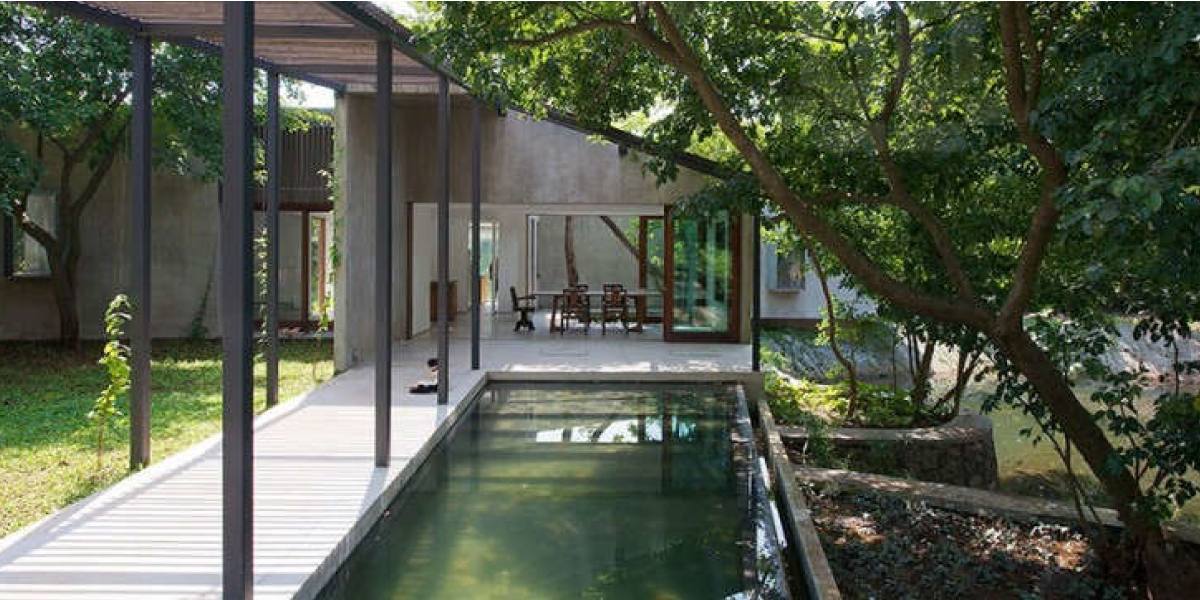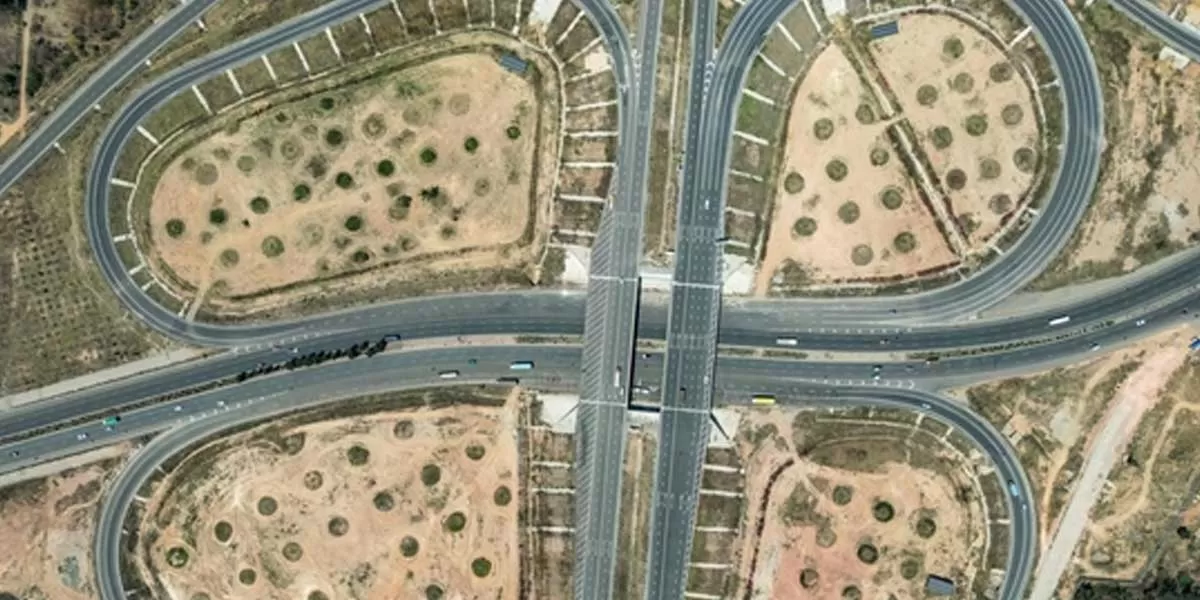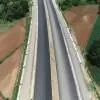External landscape is the process of designing the outer elements that are composite to the house. They might be the yards or the parking region. The external landscape might as well have parks or personal gardens taught in it. External landscaping acts as a vital tool of the aesthetic element to the construction of the house. Various components are incorporated to refine the outer landscape of the house. Some of them are Plants: They are the most common form of external landscaping. Plants are highly used in landscapes. It is because they offer an instant aesthetic boost along with being cool to the vision.
The most common kinds of plants used in the process of exterior landscaping include, but are not limited to annuals, shrubs, trees, climbers, creepers, succulents, ornamental palms, and bulbous plants. The purpose of having these plants is a purely aesthetic inspiration.
Textures: Textures in a landscape design are the cause of their visual element. These are done by focusing on the definite elements that are added to the landscape. For example, the shape of leaves in a plant, the grass in the yard, and the wall effect.
Terrains: A terrain is a simple stretch of land that is added for physical features. While adding terrains in the landscape, you must keep the proportion and distance of the terrains under focus as they contribute to the entire feel and enormity of the house.
Objects: The objects used in a landscape project are designer items such as large vases or statues that depict the soul of the house. Terracotta pottery is one of the most antique objects used in outdoor landscaping in comparatively smaller spaces to give the home a rustic glimpse.
Now that the basic component of the external landscape is explained let us focus on the different phases of exterior landscaping used for achieving an optimum result.
The first is the planning phase, the principles used for planning are mentioned below.
Planning phase
Basic principles of landscape designs
Landscape designing is an art as well as a science. Although designing an external landscape requires an artistic and creative perspective, it is very much science to focus on the basic elements required. Whether external landscaping is through borrowed ideas or personal creativity, there is a need to know these 8 basic principles to produce an admirable landscape. They will support the design by providing balance and harmony and offering a creative advantage of new ideas.
Unity
Repetition and consistency might be boring elements in the process of designing. But only through repetition and maintaining consistency of theme and shade will the house and its external landscape have unity of design. Consistency in the design is created with the help of adding various elements of the landscape in a single frame to build unity.
Balance
Balance is very vital for the designing of the house as it will avoid the space for errors. The concept of balance in the external landscape has two major divisions. They are:
Symmetrical design
The symmetrical design has an identical side at both ends of the landscape.
Asymmetrical design
An asymmetrical design holds two varied elements at either end of the landscape, but it is necessary to note that it also has equal imaginary weightage.
Contrast and Harmony
While contrast is the concept in the landscape that will enable highlighting certain prominent sections of the landscape to make it appear further attractive, it is important that contrasting elements also have to compliment ingredients added to it. The addition of a contrasting element will instantly grab the attention of the outsider. But to maintain harmony in the same situation so that the contrast doesn’t stand out too much, it is necessary to add certain juxtaposing elements of art to offer a complementary effect.
Colour
Colours have an aura that is sent across the house, which is vital for any design. The choice of colour determines the house’s feel and thus sets the initial mood. Warm colours like red, orange, yellow, brown offer an illusion of having the objects closer to the sight and provide a welcoming feel. On the contrary, cool colours such as blue, green, silver keep a distant characteristic. But cool colours also offer the landscape the advantage of creating perspective.
Transition
Transition depicts the change or growth of the scale. External elements such as a plant or other decorative objects are used to depict transition in design. You can prevent the transition process by gradually increasing or decreasing the plant or the object’s size. You can also take this to the next level, where the transition is achieved using texture, shapes, and other different size abstract objects.
Line
Lines are a common part of all construction. They are omnipresent and offer the illusion of depth and space. The proper lining is essential for the overall look of the house.
Proportion
Proportion is the term used to define the size of an object regarding another object. It is important to plan the proportion of each element. To this, you must set the final image of the landscape. Then based on this idea, the proportion of individual objects can be focused. Thus, it is often the final principle to be applied in landscape designing. You must maintain a uniform proportion for the overall aesthetics of the house.
Repetition
Repetition is highly linked to the initial principle of unity. It is ideal to possess certain repetitive elements in the landscape as it offers uniformity and continuity in the design. A lot of varied elements in the landscape can make the design look cluttered and unplanned. Thus, repetition of the elements by adhering to the theme of the construction will offer a uniform and united appeal. But in the course of repetition, it is necessary that no elements are overused. It will provide a monotonous effect.
After completing the planning, the designing process must be focused on as the ultimate need for an attractive external landscape is an appealing design.
Design phase
The process of design is divided further into 4 categories which will offer a detailed insight.
Inspiration
In this step, the sources of inspiration are collected. By making use of this inspiration, the planning of the design is done. Some of the common resources used for inspiration are magazines, online sites, tours, retail listing, etc.
Initial design
After the abstract idea for the designing of the landscape is done, you must fulfil other needs. These include the focus on budgeting, looking out for the essentials required for the designing process, floor planning, and measurement chart of the plans.
Final design
During the final phase of the design, it is recommended to take the architect’s suggestions as their expert guidance will be beneficial in understanding the weakness in the design. They might also offer their suggestions to enhance the design even further.
Construction phase
Construction is the final step of implementing the plan. In this process, the designs are brought into reality and include the elements in the landscape. Ensure to employ experienced workers. Despite the flawless design, the entire landscape might get ruined if the final work has degraded quality.
Advantages of designing the exterior landscape of your own home
A fresh start
With an option to self-design the external landscape of the house, you can enjoy the perk of having a fresh start to your house. You might be able to use all new and modern elements for the prospect of designing. This will also give customising the landscape and the house a fresh vibe, which will enhance the space.
Customisable
With the option of designing one’s external landscape, there is space for experimenting and trying new things. You also get to customise your landscape so that your house has a personal touch added to it. It is also important that you get to depict your creativity, which will match your personality, with the option of customising the landscape.
Warranty coverage
Most old construction will not possess any warranty as the period of warranty would have expired. With the new construction of the external landscape, you might get full warranty coverage for the parts that have been used. There are also options of extending the warranty if needed.
Updated technology
With the rise in technology, there is a constant upgrade available in terms of technology used. You can incorporate these technologies into landscape designing. But might not always be possible when a professional landscape designer is planning the project. For instance, the technology up-gradation is to be done only to one single segment of the landscape. It can be made possible by the user over the involvement of a contractor.
Dis-advantages of designing the exterior landscape of your own home
Non-negotiable price
With custom-made landscape designing, the unity of components might be amiss. This will lead to a price hike as varied elements must be sourced from varied regions. Due to this trait, personalisation, with the option of customising the external landscape can also pin the household’s budget.
And because there are no contractors or expert designers directly involved, you will also lose the perk of industrial discount. You might not always have the perfect connection. It might also cause delays to the project along with a price hike.
Expensive upgrades
The advantage of self-designing a landscape is that it offers the space for upgrading the design as per the individual's wish and demand. But this trait might be more expensive than a professional external designer whose firm might offer some backup choices. Your personalised design might not get such offers. It might be too expensive for the budget when it comes to upgrading the landscape.
Time-consuming
Time is the most precious thing in the world. With rising commitments and demands, every individual has a tight schedule that drains their energy and time. In such a condition, the process of landscape designing might become cumbersome.
The design steps require a lot of commitment to research and the right sourcing materials, study. If you don’t have the time to dedicate towards the designing process and construction phase, then not only will it be exhausting and expensive, but you might not prefer the result as well. Thus, it is vital to be aware of the time involved in the completion of this project.
Selection of builder
Despite all the planning and designing phases, the ultimate reality is to use the designs to construct the final project. It can only be possible with the involvement of technically skilled people like builders. For this purpose, there is a need for hiring a professional builder who possesses the right skill set to turn the design plan into reality. But the choice of a builder can be difficult if you are new to the field. You might lack internal connections. It will make it difficult for you to choose the right builder who might help you design your dream landscape.
Apart from the disadvantages mentioned above, the advantages and privileges of self-designing one's external landscape are non-negotiable. It is an experience worth cherishing as it makes the house a more personal space for all involved. The process of designing one's external landscape will make it a family process where you can project the family value. It will make it a united project which has all the contributions of the family.
Bottom-line
Designing an external landscape is a professional task, but that doesn't limit other non-professionals from being involved in it. With the right eye to details and art, anyone can design their outer landscape. This will surely be a fruitful process.
It will make the asset more personal and worthy of favourite memories. You might be excited knowing that you have covered all the aspects of designing your home, but the process of building your own home does not end here. We have one more important factor to be extremely careful about- the final walkthrough and inspection of the home.


















